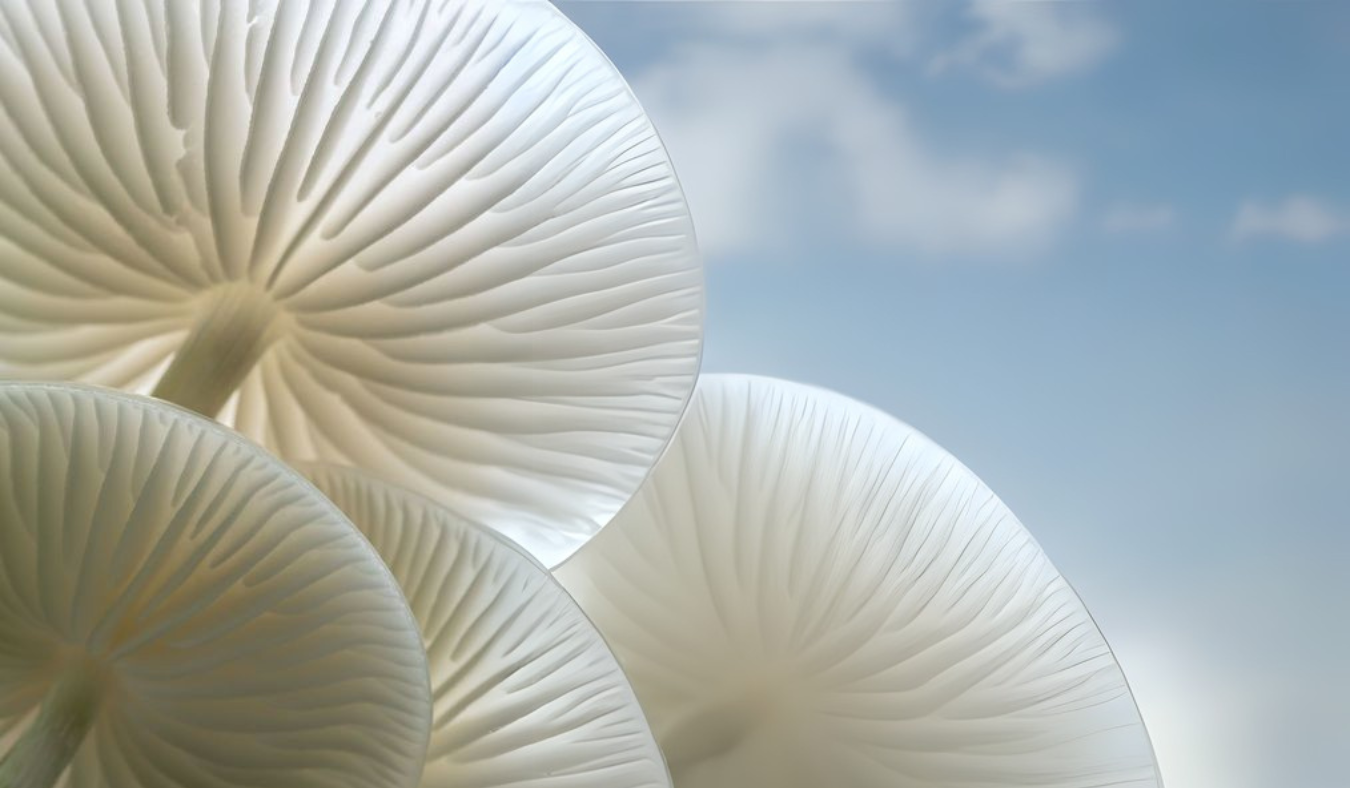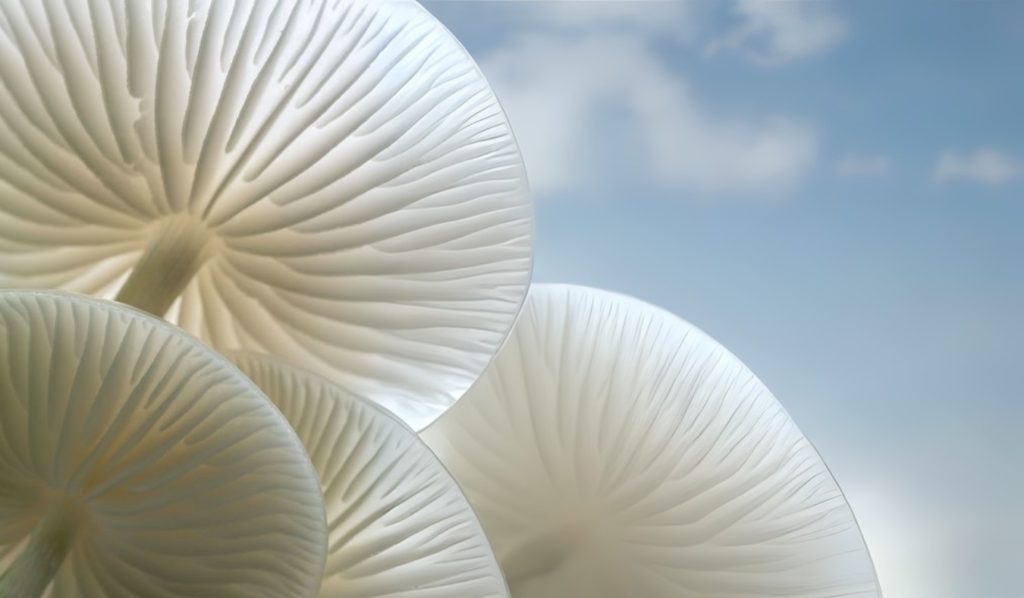Common Medicinal Mushrooms in China
China has a rich tradition of using medicinal mushrooms, with over 50 varieties utilized for health benefits. These mushrooms not only play a crucial role in traditional Chinese medicine (TCM) but also have significant applications in modern health products. Below is an overview of some commonly used medicinal mushrooms in China, including their unique characteristics, uses, historical background, and modern research.

1. Shiitake Mushroom (Lentinula edodes)
Scientific Name: Lentinula edodes
Common Name: Shiitake, Winter Mushroom
Region: Primarily found in the southeastern provinces of China, such as Zhejiang, Fujian, and Jiangxi.
Characteristics: Shiitake is one of the most popular medicinal mushrooms worldwide, known for its distinct aroma and culinary appeal.
Uses & Benefits:
- Boosts immune function
- Offers antimicrobial, antiviral, and anti-cancer effects
- Commonly used in TCM for treating respiratory and digestive issues
2. Reishi Mushroom (Ganoderma lucidum)
Scientific Name: Ganoderma lucidum
Common Name: Reishi, Lingzhi, Red Reishi
Region: Widely distributed across China, particularly in humid forest areas.
Characteristics: Known as the “Mushroom of Immortality,” Reishi has been used for thousands of years in Chinese culture as a symbol of health and longevity.
Uses & Benefits:
- Enhances immune response, reduces inflammation, and improves cardiovascular health
- Supports liver function, anti-aging, and stress relief
- Extensively used in TCM and health supplements for its overall health benefits
3. Cordyceps (Cordyceps sinensis)
Scientific Name: Cordyceps sinensis
Common Name: Cordyceps, Winter Worm Summer Grass
Region: Primarily found in high-altitude regions such as Tibet, Qinghai, and Sichuan.
Characteristics: Cordyceps is a parasitic fungus that grows on the larvae of moths.
Uses & Benefits:
- Improves stamina, vitality, and athletic performance
- Anti-fatigue, anti-aging, and immune-boosting properties
- Widely used in both traditional medicine and modern supplements to enhance energy levels

4. Black Fungus (Auricularia auricula-judae)
Scientific Name: Auricularia auricula-judae
Common Name: Black Fungus, Wood Ear
Region: Widely distributed across China, particularly in northern regions.
Characteristics: Known for its gelatinous texture, black fungus is rich in polysaccharides.
Uses & Benefits:
- Promotes blood circulation and lowers blood pressure
- Helps detoxify the body and maintain a healthy digestive system
- Used in soups, health tonics, and TCM formulations to improve lung function
5. Poria Mushroom (Poria cocos)
Scientific Name: Poria cocos
Common Name: Poria, Fu Ling
Region: Found mainly in southern China, particularly in humid forest soils.
Characteristics: Poria is a parasitic fungus that grows on the roots of pine trees.
Uses & Benefits:
- Supports spleen health, reduces water retention, and promotes digestion
- Commonly used in TCM to treat conditions related to phlegm, water retention, and digestive disorders
- Often found in Chinese herbal formulas aimed at enhancing overall vitality
6. Lion’s Mane Mushroom (Hericium erinaceus)
Scientific Name: Hericium erinaceus
Common Name: Lion’s Mane, Monkey Head Mushroom
Region: Widely distributed across China and Southeast Asia.
Characteristics: Lion’s Mane resembles a lion’s mane with its white, shaggy appearance.
Uses & Benefits:
- Supports brain health and cognitive function, promoting nerve regeneration
- Rich in antioxidants and has anti-inflammatory properties
- Used in TCM to support digestive health, improve memory, and enhance overall vitality
7. Antrodia cinnamomea (Antrodia Mushroom)
Scientific Name: Antrodia cinnamomea
Common Name: Antrodia, Ching-Ma
Region: Found in Taiwan and other parts of East Asia.
Characteristics: This medicinal fungus grows on the trunk of the camphor tree.
Uses & Benefits:
- Promotes liver health and detoxifies the body
- Used for anti-cancer, anti-inflammatory, and liver-protective properties
- A highly prized mushroom in traditional Chinese medicine for its health benefits
8. Tremella (Tremella fuciformis)
Scientific Name: Tremella fuciformis
Common Name: Silver Ear, Snow Fungus
Region: Found in southern China and Southeast Asia.
Characteristics: Tremella is known for its gelatinous texture and its ability to retain moisture.
Uses & Benefits:
- Boosts skin hydration and promotes a youthful complexion
- Supports lung health and provides antioxidant protection
- Used in beauty products and traditional TCM remedies for moisturizing and anti-aging purposes
9. Antrodia cinnamomea (Antrodia Mushroom)
Scientific Name: Antrodia cinnamomea
Common Name: Antrodia, Ching-Ma
Region: Found in Taiwan and other parts of East Asia.
Characteristics: This medicinal fungus grows on the trunk of the camphor tree.
Uses & Benefits:
- Promotes liver health and detoxifies the body
- Used for anti-cancer, anti-inflammatory, and liver-protective properties
- A highly prized mushroom in traditional Chinese medicine for its health benefits

History and Cultural Significance of Medicinal Mushrooms in China
Medicinal mushrooms have a long history in China, dating back over 2,000 years. They were first recorded in ancient Chinese texts such as the Shennong Bencao Jing (Divine Farmer’s Materia Medica), where they were classified as "superior herbs" for promoting longevity and treating various ailments.
Throughout Chinese history, mushrooms like Reishi, Cordyceps, and Shiitake were considered precious gifts from nature. They were not only used in healing but also in royal courts and by scholars to enhance longevity and spiritual well-being.
Traditional Chinese medicine (TCM) practitioners believe in the concept of “Qi” (energy flow) and use medicinal mushrooms to balance the body’s energy and treat imbalances in the organs. These mushrooms are believed to tonify the spleen, nourish the lungs, and boost the body's vital energy.
Research on Medicinal Mushrooms in China
Modern research into medicinal mushrooms1 have now been studied extensively for their bioactive compounds, including polysaccharides, triterpenoids, and peptides, which are known to have immunomodulatory, anti-cancer, and anti-inflammatory properties.
Several key institutions and universities in China are conducting ongoing research to isolate and enhance the medicinal properties of these mushrooms, leading to innovations in both pharmaceutical and nutraceutical products. The research is focused on understanding how these mushrooms can be used to treat diseases such as cancer, diabetes, heart disease, and neurodegenerative disorders.
in China has significantly advanced over the past few decades. Many mushrooms used in traditional Chinese medicine2 have now been studied extensively for their bioactive compounds, including polysaccharides, triterpenoids, and peptides, which are known to have immunomodulatory, anti-cancer, and anti-inflammatory properties.
Several key institutions and universities in China are conducting ongoing research to isolate and enhance the medicinal properties of these mushrooms, leading to innovations in both pharmaceutical and nutraceutical products. The research is focused on understanding how these mushrooms can be used to treat diseases such as cancer, diabetes, heart disease, and neurodegenerative disorders.

Global Position and Market Analysis
China is the global leader in the production and consumption of medicinal mushrooms. It produces more than 70% of the world’s medicinal mushrooms, including Shiitake, Reishi, Cordyceps, and Lion's Mane. The country’s rich biodiversity and long-standing tradition of medicinal mushroom use make it the primary supplier of these mushrooms to the global market.
Global Supply and Market Share
- Global Production: China produces over 1.5 million tons of mushrooms annually, accounting for approximately 70% of the world’s total production.
- Export: China is a major exporter of dried medicinal mushrooms, mushroom powders, and mushroom-based supplements, with the United States, Japan, and Europe being the largest importers.
- Market Growth: The global medicinal mushroom market is expected to grow at a compound annual growth rate (CAGR) of 7.8% from 2023 to 2030. China’s production capacity, combined with increasing global demand for natural health products, positions it as a dominant player in this market.
Conclusion
Medicinal mushrooms hold a significant place in Chinese culture and medicine, with a rich history spanning over 2,000 years. Today, these mushrooms are integral to traditional health practices and modern wellness trends. With ongoing research and a strong foothold in the global market, China remains at the forefront of medicinal mushroom production and innovation. As demand for natural, plant-based health solutions grows worldwide, the global market for medicinal mushrooms is expected to continue expanding, solidifying China's position as a leader in this sector.









